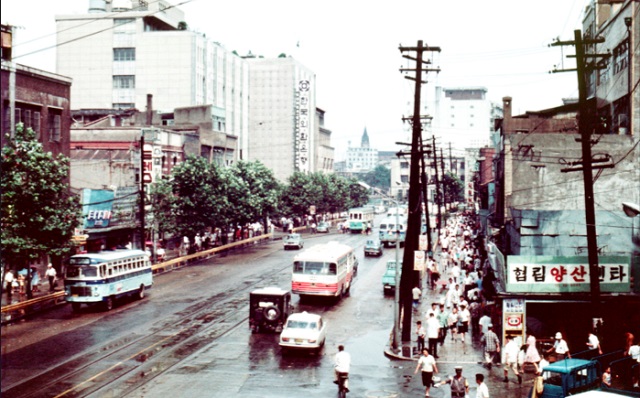
After annexing Korea, Japan expanded the number of public education institutions. By 1939 a total of 2,727 public schools had been built and student enrolment has grown from 110,000 in 1910 to 1.4 million in 1939. The number of students registered in high schools rose from 1,100 in 1910 to 69,200.
The number of students in Korea enrolled in industrial and professional schools rose from 1,100 to 34,100 between 1910 and 1939. Compare this with Uganda, which in 1962 had only 343 students enrolled in high school (S5 and S6).
Secondly Korea and Taiwan under Japanese colonialism went through land reform that swept away the power of absentee landlords while in Uganda, the British created this feudal system. According to Robert Wade, a good communications infrastructure was laid down in Taiwan and Korea during Japanese rule designed not with the narrow purpose of extracting some primary raw materials but with the aim of increasing production of smallholder rice and sugar, that were demanded in Japan.
Wade’s study shows that in Taiwan, the Japanese expanded irrigation and drainage, disseminated improved or better seeds and spread the use of fertilizers and manures energetically, sometimes even with the aid of the police. He also shows that farmers were grouped into farmers’ cooperatives, irrigation associations and landlord-tenant associations, which accelerated the spread of technical knowledge.
Wade also shows that in case of industrial development, Japanese colonialism differed from others by bringing industry to labour and raw materials rather than the other way round. During the 1930s, prompted by raising wages in Japan and by the government’s plan for war, the Japanese in Taiwan developed such industries as fruit processing, textiles, pulp and paper, cement, chemical fertilisers, aluminium and copper smelting, petroleum refining, and ship building.”
Thus, manufacturing grew in real terms at 6% per year during the long period from 1912 to 1940 and by more than 7% per annum in the 1930s. Both Taiwan and Korea had a higher rate of GDP growth than Japan between 1911 and 1938 (Japan 3.4%, Korea 3.6 and Taiwan 3.8%). Between 1911 and 1940 the share of manufacturing to GDP in Korea rose from 6% (where Uganda and most of Africa is today) to 28% while the share of agriculture fell from 76% to 41%.
On infrastructure, the Japanese invested heavily. It is true that even before 1905 (the year Japan took over management of Korea before annexing it officially in 1910), Korea had a fairly well developed telegraph network. However, the Japanese increased telephone lines from 500km to 13,000km between 1905 and 1943; telegraph lines from 5,500km to 8,800km and railway from 39km to 3,400km and private rail tracts and spur lines grew from zero to 1726km. Utilisation of rail was so high that by 1940 it carried 100 million passengers per year – and 28 million tonnes of freight. Investment in electricity generation in Korea grew to 2,800MW of electricity in 1940; electricity consumption per capita was higher than Italy.
As a result of these Japanese investments in communication, transportation and energy infrastructure, industrial growth in Korea took apace. There was even a noticeable shift from light industry (food processing, textiles, book binding, printing, ceramics etc.) to the heavy and chemical industry (metals, machinery and equipment) during this period between 1910 and 1940. Consequently, the country became more industrialised; with growing steel and iron production, machine and tool manufacturing. In shipping, tonnage bottoms multiplied 14 fold between 1910 and 1937; and tonnage of ships entering Korean ports grew to 15 million.
Thus, the interaction of investment in education; especially technical education, with highly developed transport, energy and communication infrastructure, led to rapid change. Indeed, this is the reason why in South Korea in 1960, there were 51,000 engineers and technicians – in the manufacturing sector alone there were 4,424 engineers, 31,350 managers, 5,025 sales executives, 13,660 white collar workers, 17,330 workers classified as “clerical” and 404,735 workers in industrial plants (blue collar jobs). This only reflects investments in human capital that had been done decades earlier under Japanese colonial rule.
 The Independent Uganda: You get the Truth we Pay the Price
The Independent Uganda: You get the Truth we Pay the Price




Mwenda is not truly honest in his story. The story of Korea is more about “occupation” than “colonisation.” There were competing forces between Wing China on the one hand who eventually became the “conservatives and Saigon Takamori of the Meiji dynasty on the other who eventually became “far left.” Their differences stemmed (for those in favor), the opportunity to find meaningful employment for the thousands ‘Samurai’ who had lost most of their income and social standing in the new Meiji socioeconomic order. Two opposing and competing forces (China and Japan) were inside Korea. And it was only logical that the one that outperformed the other lasted the day. This factor helped in the fast and competing development of the Korea. Secondly, unlike during colonisation, occupation is temporary and is limited to a specific task. The Japanese engaged Korea specifically for cultural and military interests, therefore, they were unless concerned about what happened with Korea in other facets of life.
But importantly too, is the Confucian philosophy. The Japanese as well as the Koreans were/are highly indoctrinated in the Confucian philosophy which bases its importance on morality, humanity and individual consideration. The philosophy centers its golden rule on who a “gentleman” is and the principle of “equity.” So, it was unlikely that such a group would treat the other in an undignified manner.
Lastly, Mwenda talks about the “Korea” as though it were one entity which it is not. The reasons as to why he decides to treat it as a single entity could central and selfishly serve his purpose but they could as well distort history. My thinking is that by avoiding to talk about North Korea, Mwenda helped himself in talking about the “tremendous development of the Korea.” However, had he included it, it would have betrayed his narrative and statistical figures that he has colourfully displayed. Korea did not develop because or during the Japanese “colonisation.” No. Because if it did develop during this period in time, both Koreas would be at per (the same level). At the end of ww2, the Berlin- Rome- Tokyo axis fell to the “Allies.” Korea was divided into two, North Korea went to the Soviet while as South Korea went to the U.S. This fact other than any explains “Korea’s (South) economic meteoric” rise, than any single historical fact.
It is, “Qing China” not “Wing China”
“A BENIGN colonial attitude”?! Japanese colonial strategy had to be different because its colonies had different endowments from those of European colonisers. The crops and manufactured goods were sent abroad for the benefit of Japanese, not for colonial subjects in Taiwan and Korea. The author seems to be well-brainwashed during his trip to Japan.